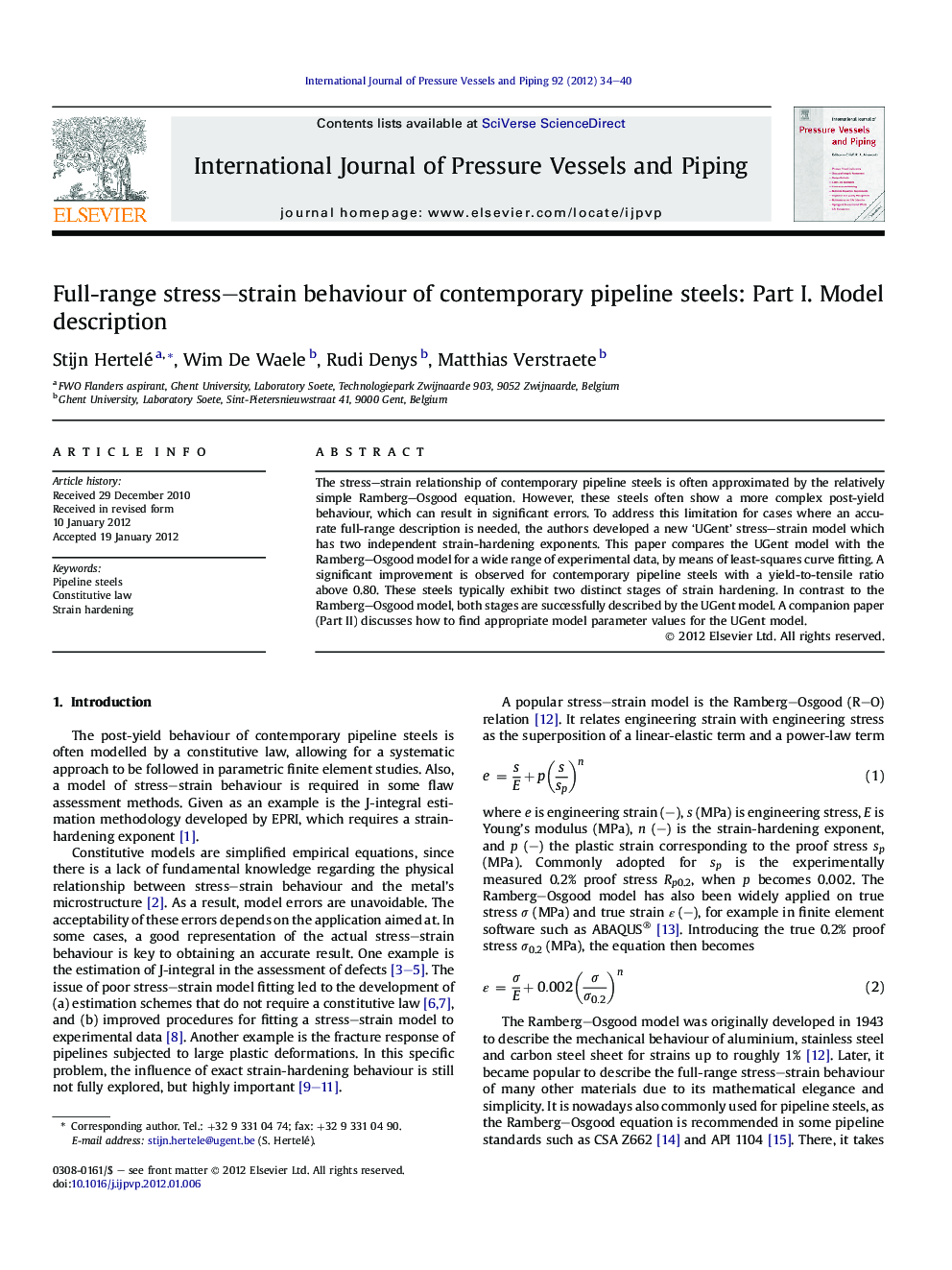| Article ID | Journal | Published Year | Pages | File Type |
|---|---|---|---|---|
| 785425 | International Journal of Pressure Vessels and Piping | 2012 | 7 Pages |
The stress–strain relationship of contemporary pipeline steels is often approximated by the relatively simple Ramberg–Osgood equation. However, these steels often show a more complex post-yield behaviour, which can result in significant errors. To address this limitation for cases where an accurate full-range description is needed, the authors developed a new ‘UGent’ stress–strain model which has two independent strain-hardening exponents. This paper compares the UGent model with the Ramberg–Osgood model for a wide range of experimental data, by means of least-squares curve fitting. A significant improvement is observed for contemporary pipeline steels with a yield-to-tensile ratio above 0.80. These steels typically exhibit two distinct stages of strain hardening. In contrast to the Ramberg–Osgood model, both stages are successfully described by the UGent model. A companion paper (Part II) discusses how to find appropriate model parameter values for the UGent model.
► Contemporary pipeline steels often show two strain-hardening stages. ► This phenomenon is progressively apparent as Y/T exceeds 0.80. ► Both stages cannot be simultaneously described by the Ramberg–Osgood model. ► A new “UGent” model provides significantly better descriptions. ► The improvement becomes more pronounced as Y/T increases.
